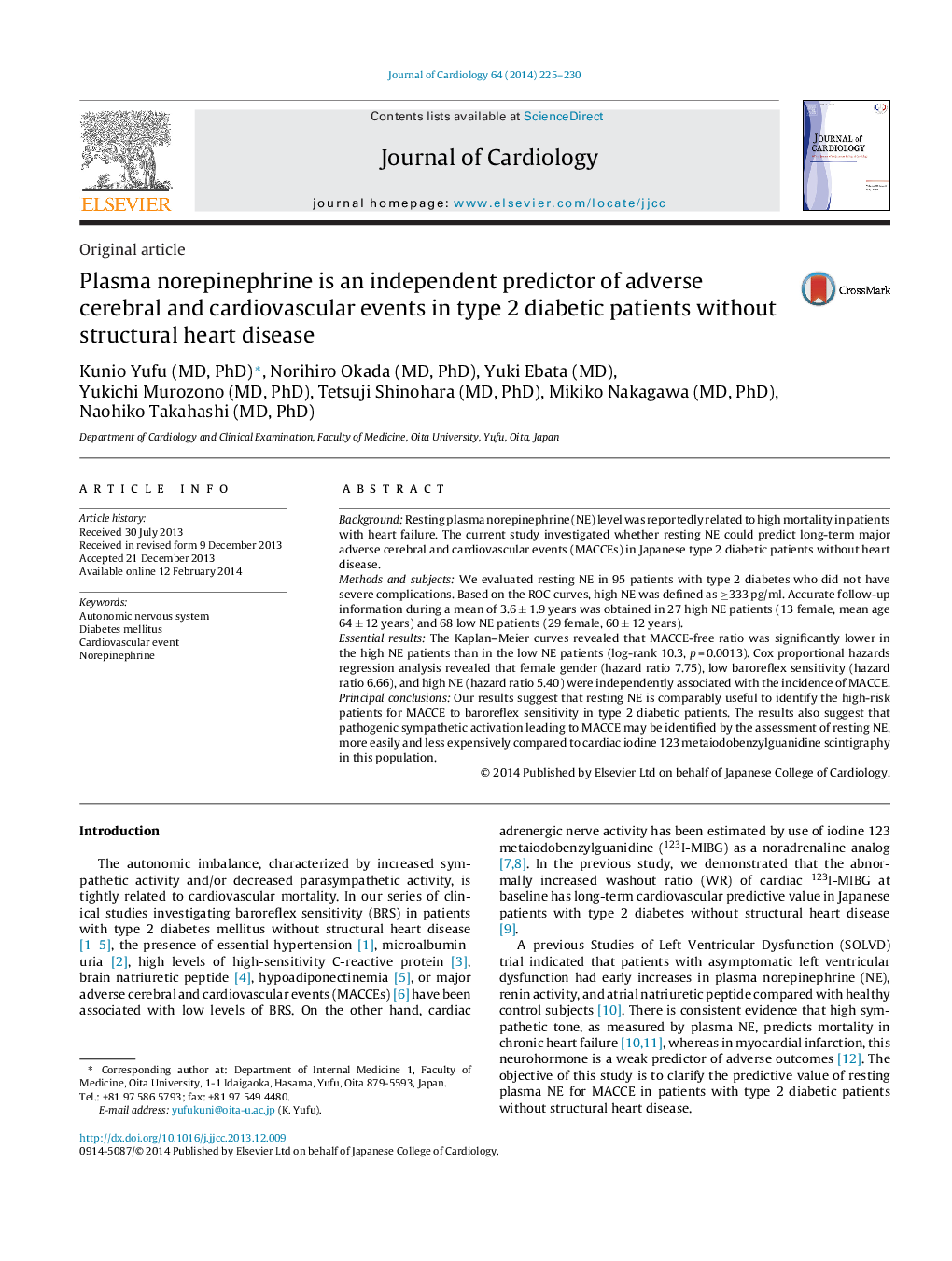| Article ID | Journal | Published Year | Pages | File Type |
|---|---|---|---|---|
| 5984103 | Journal of Cardiology | 2014 | 6 Pages |
BackgroundResting plasma norepinephrine (NE) level was reportedly related to high mortality in patients with heart failure. The current study investigated whether resting NE could predict long-term major adverse cerebral and cardiovascular events (MACCEs) in Japanese type 2 diabetic patients without heart disease.Methods and subjectsWe evaluated resting NE in 95 patients with type 2 diabetes who did not have severe complications. Based on the ROC curves, high NE was defined as â¥333 pg/ml. Accurate follow-up information during a mean of 3.6 ± 1.9 years was obtained in 27 high NE patients (13 female, mean age 64 ± 12 years) and 68 low NE patients (29 female, 60 ± 12 years).Essential resultsThe Kaplan-Meier curves revealed that MACCE-free ratio was significantly lower in the high NE patients than in the low NE patients (log-rank 10.3, p = 0.0013). Cox proportional hazards regression analysis revealed that female gender (hazard ratio 7.75), low baroreflex sensitivity (hazard ratio 6.66), and high NE (hazard ratio 5.40) were independently associated with the incidence of MACCE.Principal conclusionsOur results suggest that resting NE is comparably useful to identify the high-risk patients for MACCE to baroreflex sensitivity in type 2 diabetic patients. The results also suggest that pathogenic sympathetic activation leading to MACCE may be identified by the assessment of resting NE, more easily and less expensively compared to cardiac iodine 123 metaiodobenzylguanidine scintigraphy in this population.
